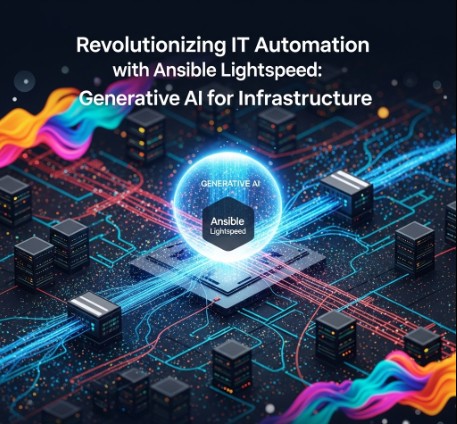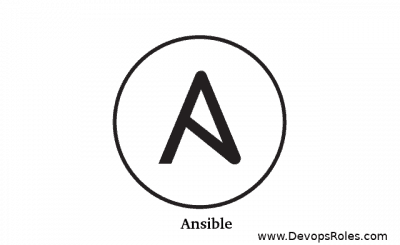In today’s rapidly evolving IT landscape, managing and automating infrastructure is more critical than ever. The sheer complexity of modern systems, coupled with the ever-increasing demand for speed and efficiency, presents a significant challenge. Traditional Infrastructure as Code (IaC) tools, while helpful, often fall short when faced with intricate, bespoke configurations or the need for rapid, iterative development. This is where Ansible Lightspeed steps in, offering a revolutionary approach to IT automation leveraging the power of generative AI. This article delves deep into Ansible Lightspeed, exploring its capabilities, benefits, and implications for the future of IT infrastructure management. We’ll uncover how Ansible Lightspeed can dramatically streamline your workflows and improve your overall efficiency.
Table of Contents
- 1 Understanding Ansible Lightspeed: A Generative AI Approach to Automation
- 2 Ansible Lightspeed in Action: Practical Examples
- 3 Ansible Lightspeed: Streamlining DevOps Workflows
- 4 Ansible Lightspeed: Addressing Challenges and Limitations
- 5 Ansible Lightspeed: The Future of IT Automation
- 6 Frequently Asked Questions
Understanding Ansible Lightspeed: A Generative AI Approach to Automation
Ansible Lightspeed is a groundbreaking initiative that utilizes the power of generative AI to significantly enhance Ansible’s automation capabilities. It goes beyond traditional Ansible playbooks by enabling the generation of Ansible code based on natural language descriptions. Instead of writing complex YAML code manually, users can describe their desired infrastructure configuration in plain English, and Lightspeed will translate this description into executable Ansible playbooks. This drastically reduces the time and effort required for automation, making it accessible to a wider range of users, including those without extensive Ansible expertise. The core of Ansible Lightspeed lies in its ability to understand the context and nuances of infrastructure management, generating highly accurate and efficient Ansible code that reflects the user’s intentions.
Key Features of Ansible Lightspeed
- Natural Language Processing (NLP): Lightspeed uses advanced NLP to interpret user requests, accurately extracting the desired actions and configurations.
- AI-Powered Code Generation: The system leverages AI models to translate natural language descriptions into well-structured, executable Ansible playbooks.
- Contextual Awareness: Lightspeed considers the existing infrastructure and dependencies when generating code, ensuring compatibility and minimizing errors.
- Error Detection and Correction: The system includes features to detect potential errors and inconsistencies in the generated code, providing suggestions for improvements.
- Integration with Ansible Ecosystem: Seamlessly integrates with the existing Ansible ecosystem, allowing users to leverage their existing modules and roles.
Ansible Lightspeed in Action: Practical Examples
Let’s explore some practical examples to illustrate how Ansible Lightspeed simplifies the automation process. Imagine you need to deploy a new web server with specific configurations, including the installation of Apache, PHP, and MySQL. With traditional Ansible, you would need to write a detailed YAML playbook, specifying every step involved. With Ansible Lightspeed, you might simply type: “Deploy a web server with Apache, PHP 8.1, and MySQL 5.7, configured for secure connections.”
Lightspeed would then analyze this request, taking into account the specifics of each component and their dependencies, and generate a fully functional Ansible playbook. This playbook would include all the necessary tasks, such as package installations, configuration file modifications, and security hardening. This significant reduction in development time allows DevOps teams to focus on higher-level tasks and strategic initiatives.
Advanced Usage Scenarios
Beyond simple deployments, Ansible Lightspeed can handle more complex scenarios, such as:
- Orchestrating multi-tier applications: Lightspeed can manage the deployment and configuration of complex, multi-tier applications across various environments.
- Automating complex infrastructure changes: It can automate complex tasks like migrating databases, scaling applications, and updating software components.
- Generating custom Ansible modules: For highly specialized tasks, Lightspeed might generate custom Ansible modules, enhancing the flexibility of the automation process.
Ansible Lightspeed: Streamlining DevOps Workflows
The integration of Ansible Lightspeed into DevOps workflows presents numerous advantages. The primary benefit is a significant reduction in the time and effort required for infrastructure automation. This translates directly into increased developer productivity and faster deployment cycles.
Benefits of Using Ansible Lightspeed
- Increased Efficiency: Automates tasks that would otherwise require significant manual effort, leading to substantial time savings.
- Reduced Errors: Minimizes human error by generating consistent and accurate Ansible playbooks.
- Improved Collaboration: Allows developers with varying levels of Ansible expertise to contribute effectively to automation efforts.
- Faster Deployment Cycles: Accelerates the deployment of applications and infrastructure changes, enabling faster delivery of services.
- Enhanced Agility: Increases the agility of DevOps teams by enabling faster adaptation to changing requirements.
Ansible Lightspeed: Addressing Challenges and Limitations
While Ansible Lightspeed offers significant advantages, it’s crucial to acknowledge some potential challenges. The accuracy of code generation depends heavily on the clarity and precision of the user’s natural language descriptions. Ambiguous or poorly defined requests might lead to inaccurate or incomplete playbooks. Furthermore, security is paramount. Users should ensure that the generated code adheres to best security practices, and regularly review and test the playbooks before deployment to a production environment. Continuous monitoring and feedback mechanisms are crucial for refining and improving the AI model’s accuracy over time.
Ansible Lightspeed: The Future of IT Automation
Ansible Lightspeed represents a significant leap forward in IT automation, leveraging the power of generative AI to streamline workflows and enhance developer productivity. By reducing the barrier to entry for Ansible automation, it empowers a broader range of users to participate in the process. As the technology matures and the underlying AI models are refined, we can anticipate even greater capabilities and improved accuracy. Ansible Lightspeed is poised to become an essential tool for DevOps teams seeking to improve efficiency, reduce errors, and accelerate their software delivery pipelines. The future of infrastructure automation is undeniably intertwined with the advancements in AI, and Ansible Lightspeed is at the forefront of this evolution.
Frequently Asked Questions
Q1: Is Ansible Lightspeed a replacement for traditional Ansible playbooks?
No, Ansible Lightspeed is designed to augment traditional Ansible, not replace it. While it simplifies the creation of playbooks using natural language, complex or highly customized automation may still require manual playbook development.
Q2: How secure is the code generated by Ansible Lightspeed?
Security is a paramount concern. While Ansible Lightspeed strives to generate secure code, users should always review and test the generated playbooks before deployment. Manual review and security audits are essential best practices to ensure adherence to organizational security policies.
Q3: What are the system requirements for using Ansible Lightspeed?
System requirements will vary depending on the specific implementation of Ansible Lightspeed. Refer to the official Ansible documentation for the most up-to-date requirements. Generally, it will require an Ansible installation and sufficient computational resources to handle the AI processing involved.
Q4: What kind of support is available for Ansible Lightspeed?
Support will be provided through Ansible’s usual channels such as community forums, official documentation, and potentially dedicated support channels depending on the licensing model. Always check the official Ansible website for the latest information on support.

In conclusion, Ansible Lightspeed offers a significant advancement in IT automation, leveraging generative AI to bridge the gap between human intent and automated infrastructure management. By embracing Ansible Lightspeed, organizations can significantly improve their efficiency and agility, paving the way for faster innovation and more reliable deployments. Mastering Ansible Lightspeed will be a critical skill for DevOps engineers and IT professionals in the years to come.
For more information, refer to the official Ansible documentation: https://www.ansible.com/ and explore related articles on AI in IT automation: https://www.example.com/ai-in-it (replace with a relevant link). Thank you for reading the DevopsRoles page!

